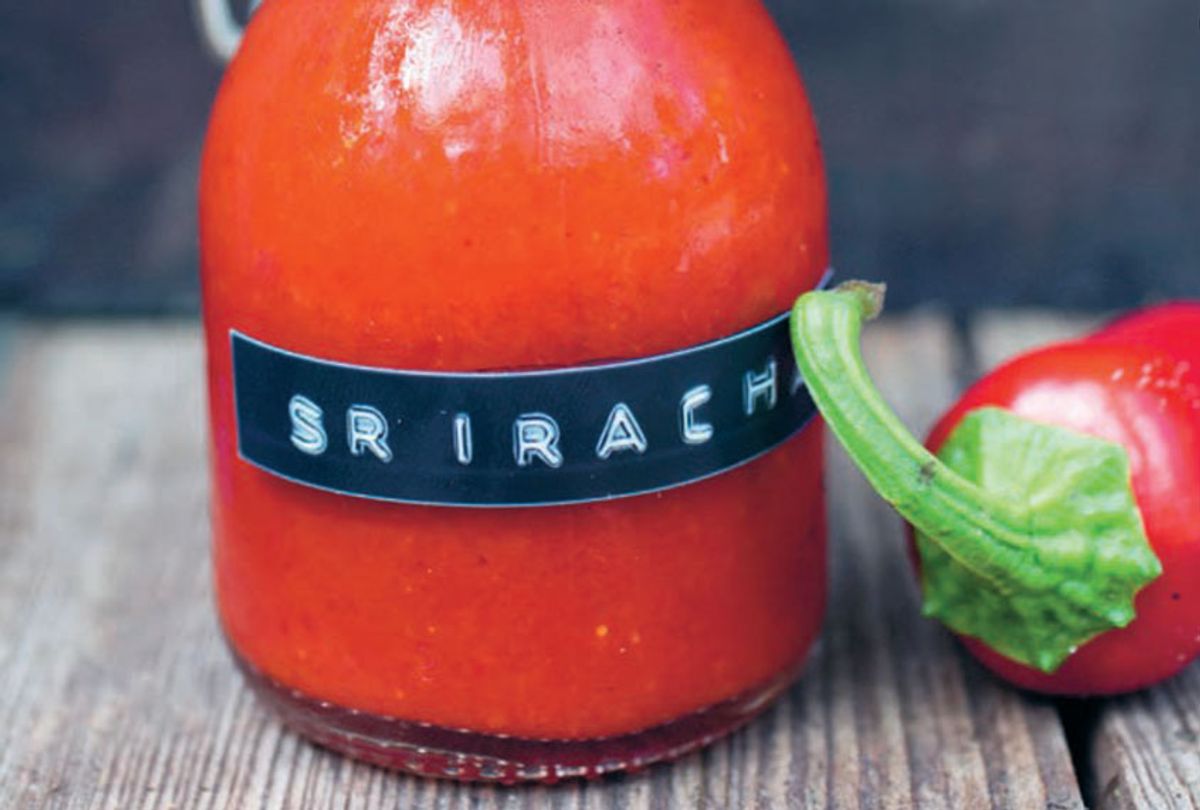Eva Robild writes all about gardening and nature, and Kerstin Rosengren grows at least 250 different kinds of chili in her greenhouse—they’re the perfect team to write this book! Everybody loves chilis these days, and it’s easy to understand why since they’re fun and easy to grow and yield a big harvest. Not to mention there is so much variety and flavors you couldn’t imagine! These authors are devoted chili lovers who show you the basics of growing chili, from planting a seed during the winter months to moving them outdoors during the summer, as well as featuring more than 200 different varieties with cultivation tips, images, and taste guides.
***
In Thailand, its country of origin, Sriracha is eaten primarily with different kinds of shellfish. However, in the United States, where the sauce has become incredibly popular in the last few years, you can see it used on, among other things, pizza and spring rolls and in beer (!). The original sauce has to go through the fermentation process, but you can skip it even though the flavor won’t develop fully.
***
Recipe: Sriracha
- 1 lb 1¾ oz. (500 g.) jalapeños (ripe, red fruits)
- 5 garlic cloves
- 3 tbsp brown sugar
- 2 tbsp non-iodized salt
- 5 fl. oz. (1½ dl.) white wine vinegar
Remove the stalk, but leave the seeds and pith in the fruits. Mix them finely with garlic, sugar, and salt, and pour the mixture into a thoroughly cleaned glass jar. Cover with plastic wrap and leave the jar at room temperature. Stir the mixture every day. The sauce will start to ferment after 2 to 4 days, which is the purpose of storing it at room temperature. Continue to stir the mixture every day (if the sauce turns moldy it will be inedible, but cloudy-looking water is normal). The fermentation is done after 5 to 6 days.
Pour the sauce back into the mixer and add the vinegar. Mix thoroughly and pass the mixture through a sieve so you end up with a purėe without seeds or bits of peel. Cook the purėe for 5–10 minutes to desired consistency. Let the sauce cool and store it in the refrigerator. The sauce will keep for about 1 year.

Shares